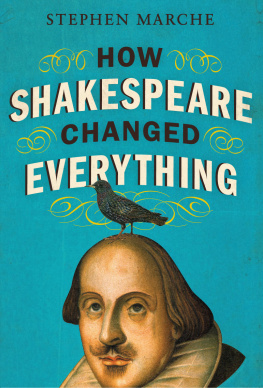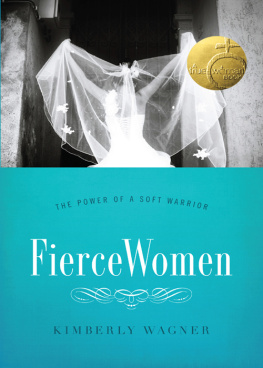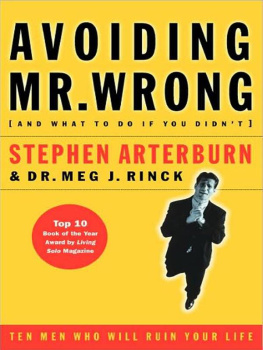Thank you for downloading this Simon & Schuster eBook.
Join our mailing list and get updates on new releases, deals, bonus content and other great books from Simon & Schuster.
C LICK H ERE T O S IGN U P
or visit us online to sign up at
eBookNews.SimonandSchuster.com
We hope you enjoyed reading this Simon & Schuster eBook.
Join our mailing list and get updates on new releases, deals, bonus content and other great books from Simon & Schuster.
C LICK H ERE T O S IGN U P
or visit us online to sign up at
eBookNews.SimonandSchuster.com
To Sunny and Janet and Bob and Geraldine
How Much Should a Man Speak?
I T is a well-established fact at this moment in history that men talk too much. They speak when they should listen, and once they start talking they go on and on and on and on and on.
Fifty years after the birth of feminism, when its promise of gender liberation seems closer and more distant than ever before, the word mansplaining has arisen to describe the sheer bulk of verbiage men foist onto the world. The word has followed the typical life trajectory newborn words take in the twenty-first century. Inspired by an essay by journalist and activist Rebecca Solnit, mansplaining started as an insider joke among journalists and activists, then spread to the New York Times word of the year list and the online Oxford Dictionaries . Its meaning expanded through the inflation of meme. So there were several variations. Some were serious ( whitesplaining , blacksplaining , ablesplaining ); some were not ( geeksplaining , momsplaining , Foxsplaining ). Then, as the word drifted into common usage, its meaning loosened. TV commentators pounced on White House spokesman Jay Carney for mansplaining the White House gender pay gap, but the slur failed to stick. Can you use mansplaining to describe any instance of a man explaining anything, even when hes answering a question youve asked him? The community of journalists who pioneered the words adoption slowly began to pioneer its abandonment. There are plenty of overexplaining women, they pointed out, and occasionally men who speak are not doing so strictly to drown out the voices of women.
The word survives nonetheless because it describes a common social scenario so aptly. Solnits inspiration was a man at a party who, on learning that she had written a book about film pioneer Eadweard Muybridge, lectured her on a recent book about film pioneer Eadweard Muybridge, which happened to be Solnits book about film pioneer Eadweard Muybridge. It was yet another case of a man, confronted with a knowledgeable woman, displaying his own knowledge to the maximuma dick-measuring contest where only one party has a dick. I first heard about mansplainers from a woman who started dating again after a divorce in her mid-fifties. On every date she was forced to endure mini-lectures on subjects about which she was an expert. I saw mansplaining in action just yesterday in the park. A young couple, in a cloud of marijuana smoke, lounging on beach towels they had spread in a patchwork equivalent of a picnic blanket, were playing chess, the man offering his opinion of each of her moves, right up to the point when she mated him. Immediately following his loss, he kept right on explaining the womans moves to her.
For Solnit, these tiny but ubiquitous social interactions amount, in aggregate, to a politics of silence. In ways big and small, men have too much to say. Having the right to show up and speak are basic to survival, to dignity, and to liberty, she wrote in Men Explain Things to Me . Im grateful that, after an early life of being silenced, sometimes violently, I grew up to have a voice, circumstances that will always bind me to the rights of the voiceless. But Solnits larger political point is vague and nowhere near as urgent as the question of etiquette, of proper manners between men and women. In daily life, in the world in which men and women talk, the result of adding mansplaining to our vocabulary is that it might cause men who hear it or read it to think twice before explaining anything to a woman.
To take the example at hand, I am a man writing a book about men and women. I am thinking twice right now.
* * *
An empirical question first: Do men in fact explain things more than women? In her 2006 book The Female Brain , the American neuropsychiatrist Louann Brizendine claimed that the average woman uses nearly three times as many words as the average man. Other researchers disagreed immediately and vociferously. At the University of Arizona a group of sociologists attached voice recorders to 396 participants and found no statistical difference in how much men and women spoke. The widespread and highly publicized stereotype about female talkativeness is unfounded, they wrote. (The stereotype in this case being that women, rather than men, have too much to say.)
In 2014, Harvard researchers used electronic monitoring and found that men and women spoke more or less depending on the size of the group and the setting. While collaborating on a work project, in groups of seven or fewer, women talked more and men talked more often. During a lunch break, women spoke more in larger groups, and men talked more in smaller groups. The problem in determining who talks more, men or women, when, where, and in what size groups, under what conditions, is a sub-problem of the attempt to measure social interactions reliably. The dynamic realities of human speech, setting and tone and situation, means that gauging which gender actually speaks more is nearly impossible. The human weather is too implacable.
A recent California State University study of email exchanges, which are easy to measure, found that women wrote more than men across a range of situations, in both work and personal messages. The researchers concluded that electronic communications may level the playing field, or even give females an advantage, in certain communication situations. (The stereotype up for rejection in this case being that men wont shut up.) Likewise, almost every form of social media is dominated by women; 76 percent of U.S. women use Facebook, compared to 66 percent of men, and that divide more or less applies to the others: Twitter (18/17), Instagram (20/17), and Pinterest (33/8). The only exception is LinkedIn (28/27).
Who talks more has been one of the traditional battlegrounds in the gender wars. At the beginning of the feminist revolution, male reserve rather than male speech was the symptom of disease. In 1971 the sociologists Jack Balswick and Charles Peek published The Inexpressive Male, an essay that became the basis of many thoughtful male responses to feminism. As sex role distinctions have developed in America, the male sex role, as compared to the female sex role, carries with it prescriptions which encourage inexpressiveness, they wrote. For the men courageous and sensitive enough to recognize the import of the feminist revolution, the first requirement was expression: expression as release from frozen Stoic ideals and expression as the beginning of a considerate masculinity.
Men were encouraged to talk more, not less, particularly around women. In 1985 Michael McGill, author of The McGill Report on Male Intimacy , concluded, Most wives live with and love men who are in some very fundamental ways strangers to themmen who withhold themselves and, in doing so, withhold their loving. These wives may be loved, but they do not feel loved because they do not know their husbands. The crisis was male silence and the solution was a cultural revolution, one that expected intimacy of men and sought to redefine the male nature of expression. Among the techniques for applying this new expressiveness were mens rights groups, consciousness-raising, cognitive-behavioral therapies, and just generally sharing your feelings and going on and on and on and on and on.
Next page










